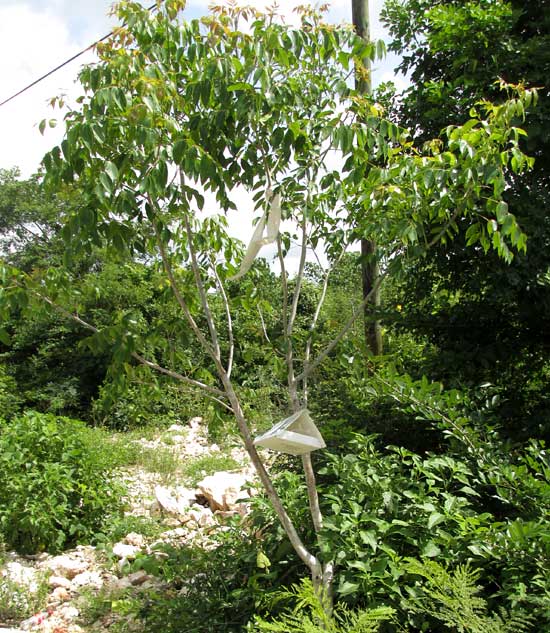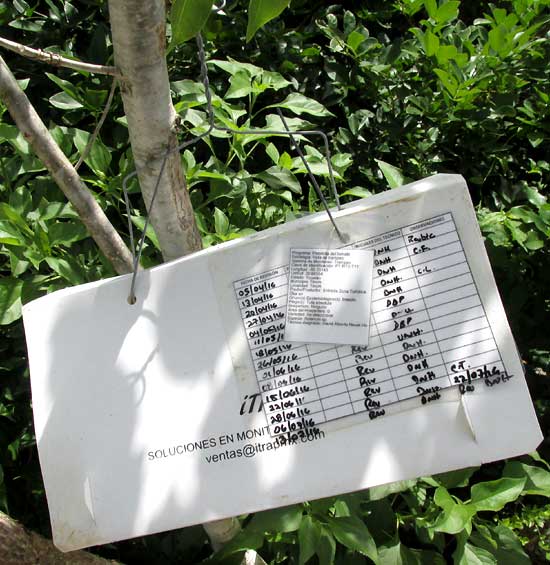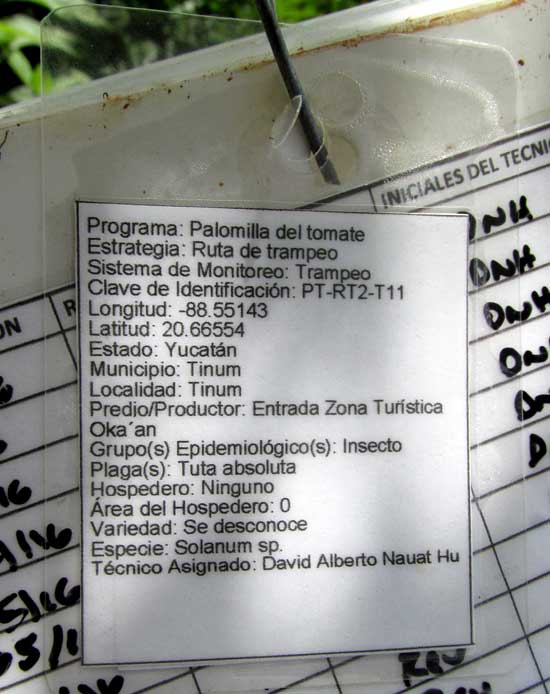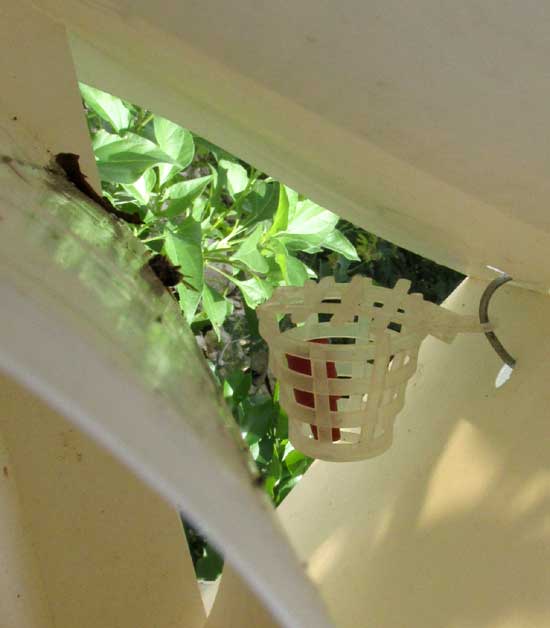Excerpts from Jim Conrad's
Naturalist Newsletter
from the July 31, 2016 Newsletter issued from Hacienda Chichen Resort beside Chichén Itzá Ruins; limestone bedrock; elevation ~39m (~128ft), N20.675°, W88.569°; central Yucatán state, MÉXICO
TOMATO borer PHEROMONE TRAP
Beside the highway between the Chichén Itzá Hotel Zone and the village of Xcalacoop just to the east, a small tree was decorated with a white ribbon and a white, open-ended, triangular box, as shown at below:

Such boxes are frequently seen in Mexico, and it's generally known that they're insect traps. Chemical pheromones attract specific insects who fly into the box and get stuck on something. One always is curious as to what's being monitored. Back in 2011 on the Yucatan's Caribbean coast just north of Mahahual we investigated pheromone traps there targeting Palm Weevils destroying palms along many Mexican coasts. You can see pictures of that trap and some collected Palm Beetles at www.backyardnature.net/yucatan/palmweev.htm
This week's white box-trap had been visited by a technician fairly frequently, as notes neatly written on the box itself shows, below:

The little tag atop the notes explains everything, shown below:

The trap is part of the "Palomilla del Tomate" program, the Palomilla del Tomate variously known in English as Tomato borer, South American Tomato Moth, Tomato Leaf Miner, and South American Tomato Pinworm. It's Tuta absoluta, the adult phase of which is a very small, brownish, plain-looking, narrow-bodied moth whose grub-type larvae burrow through leaves, stems and fruits of tomato plants, and closely related species. You can find and download a free, well illustrated PDF document in Spanish all about the Tomato borer in Mexico by Googling "Ficha Técnica No. 28 Palomilla del tomate Tuta absoluta Meyrick."
A peep inside the box can be seen below:

There we see a small, plastic basket holding what apparently is a small vial of pheromone that attracts the Tomato borer, and to its side there's a sticky sheet that seems to have collected a dried-up leaf and an innocent fly. This is good news, that no Tomato borers have been collected, but it's to be expected. The above-mentioned PDF document says that the Yucatan has a small risk of being invaded by the moth. Of greatest risk are tomato-growing regions along the Pacific coast, especially Baja California. As of the PDF's updated publication date, 2015, no Tomato borers had been detected in Mexico, the closest outbreaks being in Panama and Costa Rica.
However, in countries where the moth exists it has in some cases wiped out entire tomato producing operations with crop losses of up to 100%. The Mexican government's close watch for the moth here in low-risk Yucatan shows just how nervous people are about finding the moth anyplace in the country.